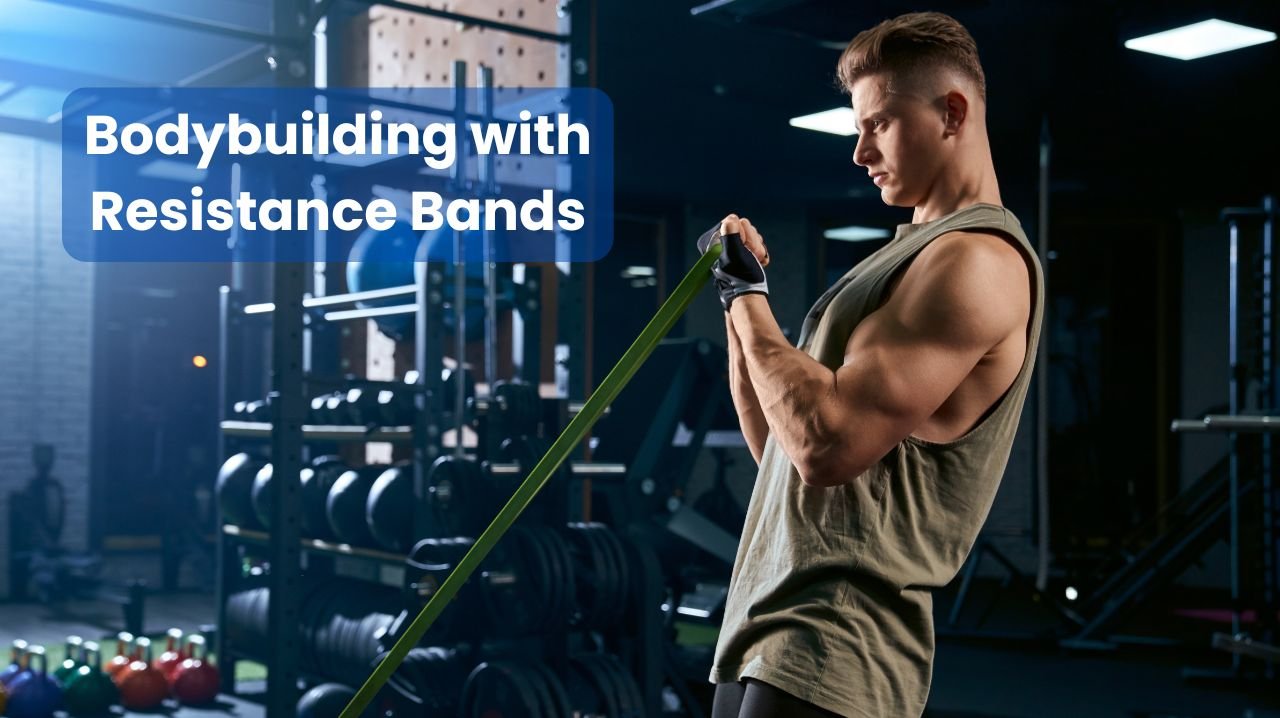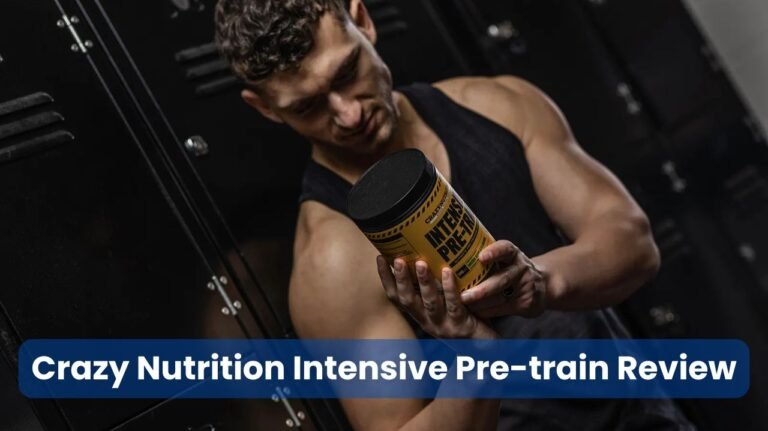Bodybuilding with Resistance Bands: Build Muscle Anywhere
For fitness enthusiasts looking to build muscle without the need for a fully equipped gym, resistance bands offer an excellent solution.
These versatile and portable tools can help anyone achieve their bodybuilding goals, whether at home, in a park, or while traveling.
This article explores the benefits of resistance band training and provides a comprehensive guide to building muscle using these simple yet effective devices.
👉 Boost in Focus and Energy to Help Increase Pumps and Performance
👉 Increase Gains, Promote Muscle Growth and Boost Energy
👉 Powerful Muscle Growth, Increased Blood Flow, and Enhanced Pumps
👉 Bulk-Up, Increase Gains, And Improve Recovery
Why Choose Resistance Bands for Bodybuilding?
Resistance bands have gained popularity among fitness enthusiasts for several reasons:
- Portability: They’re lightweight and easy to pack, making them ideal for travelers or those with limited space.
- Versatility: Bands can be used to target virtually every muscle group in the body.
- Cost-effective: Compared to traditional gym equipment, resistance bands are relatively inexpensive.
- Scalable resistance: Users can easily adjust the difficulty by changing band tension or combining multiple bands.
- Low impact: Resistance band exercises are generally easier on the joints than free weights.
- Muscle activation: Bands provide constant tension throughout the range of motion, potentially leading to greater muscle engagement.
Types of Resistance Bands
Before diving into exercises, it’s important to understand the different types of resistance bands available:
- Tube bands with handles: These are versatile and great for mimicking free weight exercises.
- Loop bands: Ideal for lower body workouts and assisted pull-ups.
- Therapy bands: Flat, wide bands often used in rehabilitation settings but also effective for strength training.
- Figure 8 bands: Shaped like the number 8, these are designed for upper body exercises.
- Mini bands: Small loop bands perfect for targeted exercises, especially for glutes and legs.
Building a Resistance Band Workout Routine
To effectively build muscle with resistance bands, it’s crucial to create a well-structured workout routine. Here’s a sample weekly plan:
| Day | Focus | Exercises |
|---|---|---|
| Monday | Chest and Triceps | Band push-ups, chest flyes, tricep extensions |
| Tuesday | Back and Biceps | Band rows, lat pulldowns, bicep curls |
| Wednesday | Rest or Light Cardio | – |
| Thursday | Legs and Shoulders | Squats, leg press, shoulder press, lateral raises |
| Friday | Full Body | Combination of exercises from other days |
| Saturday | Core and Abs | Pallof press, Russian twists, band crunches |
| Sunday | Rest | – |
Key Exercises for Each Muscle Group
To build muscle effectively, it’s important to target each major muscle group with specific exercises. Here are some key resistance band exercises for different body parts:
Chest
- Band push-ups: Loop a band around the back and hold the ends in each hand while performing push-ups.
- Chest press: Anchor the band behind you and push forward, mimicking a bench press motion.
- Chest flyes: With the band anchored behind, perform a flye motion with arms slightly bent.
Back
- Bent-over rows: Stand on the band and pull the handles up towards your chest, squeezing your shoulder blades.
- Lat pulldowns: Anchor the band above you and pull down, focusing on engaging your lats.
- Face pulls: With the band at shoulder height, pull towards your face, targeting the rear delts and upper back.
Legs
- Banded squats: Stand on the band and hold the ends at shoulder level, then perform squats.
- Leg press: Lie on your back, loop the band around your feet, and press upward.
- Glute bridges: With the band across your hips and anchored to the ground, lift your hips upward.
Shoulders
- Shoulder press: Stand on the band and press the handles overhead.
- Lateral raises: Step on the band and raise your arms out to the sides.
- Front raises: Similar to lateral raises, but raise your arms forward instead.
Arms
- Bicep curls: Stand on the band and curl the handles up towards your shoulders.
- Tricep extensions: Hold the band behind your head and extend your arms upward.
- Hammer curls: Perform curls with your palms facing each other.
Core
- Pallof press: With the band anchored to your side, press outward while resisting rotation.
- Russian twists: Sit on the ground, wrap the band around your feet, and twist side to side.
- Banded crunches: Anchor the band above you and perform crunches against the resistance.
Proper Form and Technique
To maximize muscle growth and prevent injury, proper form is crucial when using resistance bands. Here are some general tips:
- Maintain tension: Keep the band taut throughout the entire range of motion.
- Control the movement: Avoid letting the band snap back; control both the concentric and eccentric phases.
- Anchor securely: Ensure the band is safely anchored to prevent slipping or breaking free.
- Watch your posture: Maintain a neutral spine and engage your core during exercises.
- Full range of motion: Aim for a complete stretch and contraction in each repetition.
Progressive Overload with Resistance Bands
Progressive overload is key to continuous muscle growth. With resistance bands, this can be achieved through:
- Increasing tension: Use bands with higher resistance levels as you get stronger.
- Adding bands: Combine multiple bands to increase overall resistance.
- Adjusting stance: Widen or narrow your stance to alter the tension.
- Slowing tempo: Perform exercises more slowly to increase time under tension.
- Increasing volume: Add more sets or repetitions to your workouts.
Nutrition for Muscle Growth
Building muscle isn’t just about exercise; proper nutrition plays a crucial role. Here are some key nutritional considerations:
- Protein intake: Aim for 1.6-2.2 grams of protein per kilogram of body weight daily.
- Caloric surplus: Consume slightly more calories than you burn to support muscle growth.
- Complex carbohydrates: Provide energy for workouts and recovery.
- Healthy fats: Support hormone production and overall health.
- Hydration: Drink plenty of water to support muscle function and recovery.
Sample Meal Plan for Muscle Building
Here’s a basic meal plan to support muscle growth:
- Breakfast: Oatmeal with whey protein, banana, and almonds
- Snack: Greek yogurt with berries and honey
- Lunch: Grilled chicken breast, brown rice, and mixed vegetables
- Pre-workout: Apple with peanut butter
- Post-workout: Protein shake with banana and spinach
- Dinner: Salmon, sweet potato, and broccoli
- Before bed: Cottage cheese with a small handful of nuts
Combining Resistance Bands with Other Training Methods
While resistance bands can be effective on their own, combining them with other training methods can enhance results:
- Free weights: Use bands to add variable resistance to barbell or dumbbell exercises.
- Bodyweight exercises: Add bands to pull-ups, dips, or push-ups for increased difficulty.
- Suspension training: Combine bands with TRX or similar systems for unique challenges.
- Cardio: Incorporate band exercises into high-intensity interval training (HIIT) routines.
Recovery and Rest
Proper recovery is essential for muscle growth. Consider these recovery strategies:
- Adequate sleep: Aim for 7-9 hours of quality sleep per night.
- Rest days: Include at least one or two rest days per week.
- Active recovery: Engage in light activities like walking or yoga on rest days.
- Stretching: Perform static stretches post-workout to improve flexibility and reduce soreness.
- Foam rolling: Use a foam roller to massage muscles and improve blood flow.
Tracking Progress and Staying Motivated
To ensure continued progress and maintain motivation, consider these strategies:
- Keep a workout log: Record exercises, sets, reps, and band resistance used.
- Take progress photos: Visually track changes in your physique over time.
- Set realistic goals: Establish both short-term and long-term objectives.
- Find a workout partner: Train with a friend for accountability and motivation.
- Vary your routine: Periodically change exercises to prevent boredom and plateaus.
👉 Pack On Muscle Mass and Get Bigger and Stronger
👉 Burn Fat and Get Seriously Ripped
👉 Get Explosive Strength and Maximum Stamina
👉 Become A Gym Beast With Legal SARMs Alternatives
Conclusion
Bodybuilding with resistance bands offers a convenient, effective, and versatile approach to building muscle. By following a well-structured workout plan, maintaining proper form, progressively overloading muscles, and supporting efforts with good nutrition and recovery practices, fitness enthusiasts can achieve impressive results without the need for a fully equipped gym.
Whether used as a primary training method or in combination with other techniques, resistance bands prove that building muscle anywhere is not just possible, but highly effective. So grab those bands, get creative with your workouts, and watch your muscles grow—no matter where you are.







